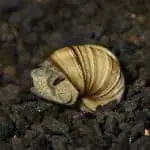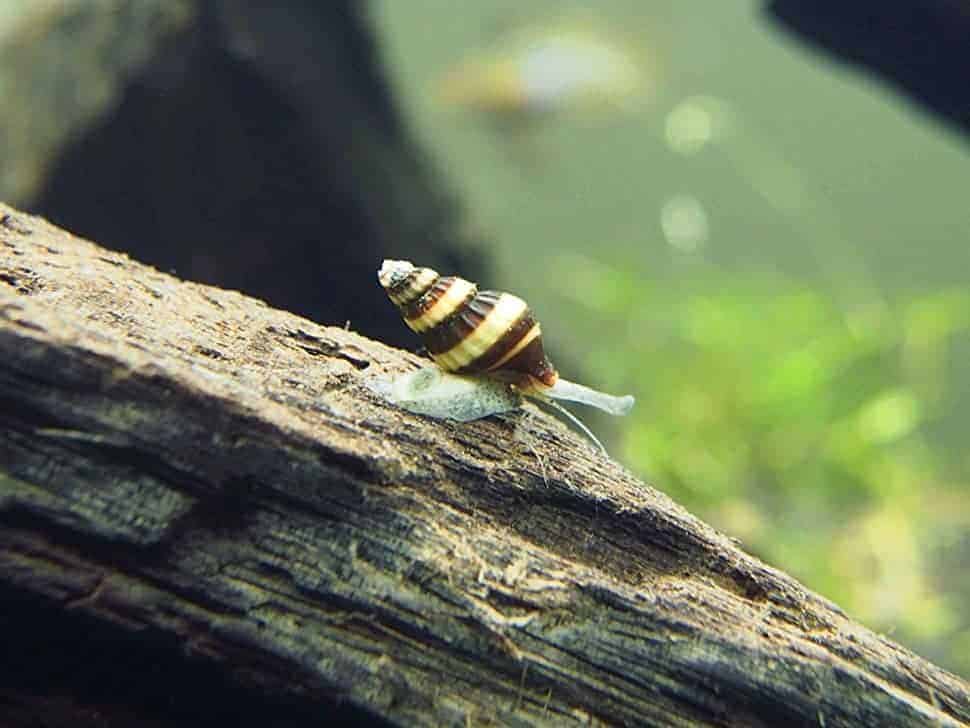
Freshwater snails have become a very common part of many aquariums and people often pet them.
If you are planning on keeping freshwater snails in your aquarium then you must understand that this is going to be an adventure worth experiencing.
Freshwater aquarium snails types
| Image | Type | Diet | Water conditions | Maximum size |
|---|---|---|---|---|
 | Japanese Trapdoor (Viviparus malleatus) | Omnivore | 68-85°F KH 5-12 pH 6.5-8.0 | 2″ |
 | Apple snails (mystery snail,Ampullariidae) | Omnivore | 64-82°F KH 5-12 pH 6.5-8.0 | 1.5″ |
 | Assassin Snail (Clea helena) | Omnivore | 68-74°F KH 2-15 pH 6.5-7.5 | 3″ |
 | Neritina natalensis (spotted nerite) | Omnivore | 65-85°F KH 5-12 pH 6.5-8.0 | 1″ |
 | Rabbit Snail (Tylomelania) | Omnivore | 68-74°F KH 2-15 pH 6.5-7.5 | 3″ |
Here is a step guide in order to help you take care of new pet snails.
Understand the Basics
The first step involves understanding the basics of snails like there are two types of them.
One which lives in the seawater, and the ones that live in freshwater. You would not want to have the seawater snails in your tank or aquarium while you can keep the freshwater snails.
There are many species of freshwater snails as well, and you would have to choose between them. They come in various colors and textures which make them unique and give them an exquisite look.
Once you have chosen the exact type of snails you want in your aquarium or tank you need to move ahead to the second step.
Choose the Perfect Snail
- You would not want to end up taking the unhealthy snails as that would be just a beginning gone wrong.
- You might want to look for the healthy ones from the type of snails you want in your tank.
- If there is an uneven distribution of color on the outer area, it is one of the signs that the snail is unhealthy.
- If the snails seem to be motionless and inactive most of the time it might be another sign and you shouldn’t go for them.
- There can be spots or marks or fungus present on the body of snails and they should be avoided.
Now that you have already cleared the clutter and are left with a few of the snails, it is time to choose wisely. Because you are going to pet them and take care of them you wouldn’t want them to be unhealthy or carrying parasites.

Selecting a Proper Tank
Once you have chosen the right snails, its time for you to think about their new home.
API STRESS COAT Aquarium Water Conditioner 4-Ounce Bottle (85B)
40% OffTetra AquaSafe Plus, 8.45 Ounces, aquarium Water Conditioner And Dechlorinator, Model Number: 46798162681 (Pack of 1)
$8.49 (as of October 21, 2024 08:06 GMT +03:00 - More infoProduct prices and availability are accurate as of the date/time indicated and are subject to change. Any price and availability information displayed on [relevant Amazon Site(s), as applicable] at the time of purchase will apply to the purchase of this product.)Tetra 16172 AquaSafe Fish Tank Water Conditioner, 8.45 fl oz
39% OffThe tank should be transparent for you to be able to notice the activities of these tiny cute little creatures, and should definitely have a porous lid.
The lid would ensure that these snails aren’t able to crawl and escape from their new home, and the pores would make sure that there is sufficient passage of air.
The size of the tank would totally depend on the number of snails you would want to put in it. The size would also depend on the rate of reproduction of the snails you have chosen because they can keep on multiplying.
Providing Living Conditions
You need to understand these little creature’s previous habitat and apply various things accordingly.
The freshwater snails have the tendency to go to the bed of the substrate in search of food.
You might want to add a substrate bed at the bottom of the tank and also plant a few freshwater plants in order to provide them a better experience.
You can add gravel as some of them prefer gravel while many prefer sands. The layer of this bed should be at least two inches in order to make them have their part of the fun in digging through it.
Using Suitable Water
You can’t use the tap water directly as it contains chemicals and particles that are good for humans and can be very harmful and deadly to the snails.
You will have to first treat the water and then use it, or you can use bottled water.
In any case, you’ll have to take care of the pH value of the water and ensure a pH balanced water for your snails. You can also try to keep a pH testing kit because it can come in handy throughout the whole process.
What do freshwater snails eat?
Depending upon what are the eating habits of the species of snails you have brought, you need to provide them with a proper dosage of food regularly.
The feeding process should be taken care of in a routine manner in order to ensure healthy living and survival of your new pets.
Many of the snails like algae or plants to graze on and you can provide them with an ample amount of that diet.
If we are to consider the opinions of experts then you should provide them with the exact amount of food that they can consume in the first three minutes. This actually helps in keeping them healthy and ensures good metabolism.
Keeping a Regular Check
You need to keep a check on your snails regularly and routinely in order to identify any problem as such.
Sometimes people mistake the floating on top of the water to be a sign of them being dead.
Sometimes it is just an air bubble in the shell that forces the lightweight snails to float at the top. A snail usually never dies inside of its shell which means you shouldn’t consider it dead if it is retracted inside the shell.

Hi, my name is Sean, and I’m the primary writer on the site. I’m blogging mostly about freshwater and saltwater aquariums, fish, invertebrates, and plants. I’m experienced in the fishkeeping hobby for many years. Over the years I have kept many tanks, and have recently begun getting more serious in wanting to become a professional aquarist. All my knowledge comes from experience and reading forums and a lot of informative sites. In pursuit of becoming a professional, I also want to inspire as many people as I can to pick up this hobby and keep the public interest growing.
Read more about Sean.
Please join also my Facebook group.





















I’m curious what it means when a snail is climbed up to the top of the tank and starts shaking his whole body and tentacles..is it just being playful? also, how can u tell which are male and which ones are female? I have two mystery snails in my freshwater aquarium.
I’ve seen some of my snails do the same at the top of my aquarium…
These snails may change sex from male to female (or female to male).
I think you should check your snails’ behavior to figure out the sex of the snails.
..and why does one of my mystery constantly attach itself to my other snail for long periods of time? I can tell that my snail doesn’t like it and is always trying to bang the attached snail against a rock until he finally lets go